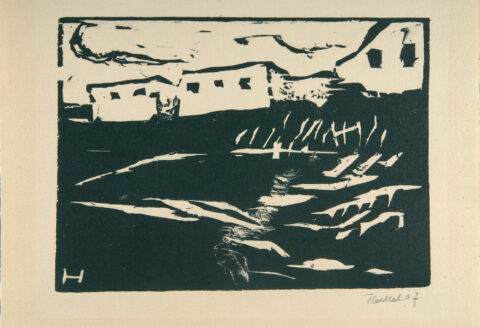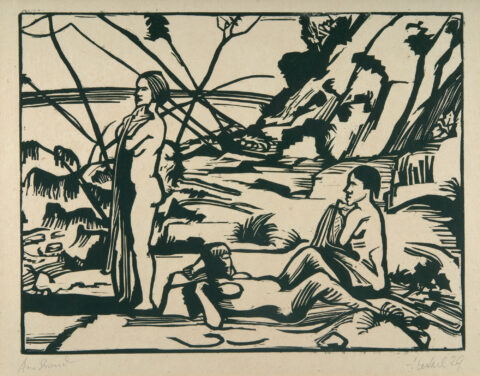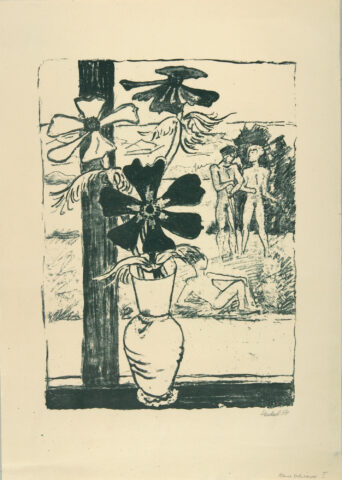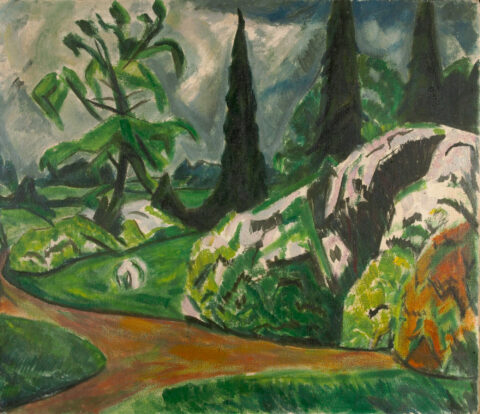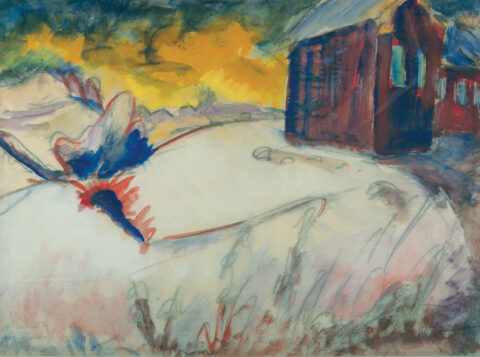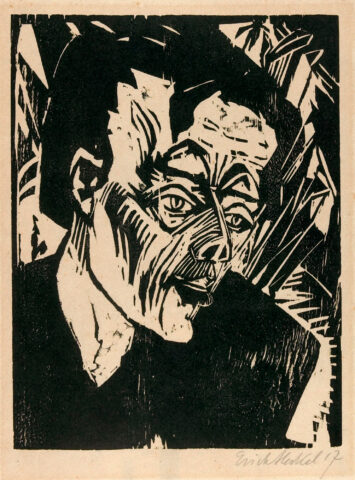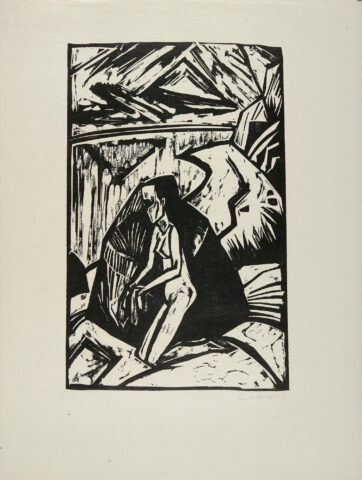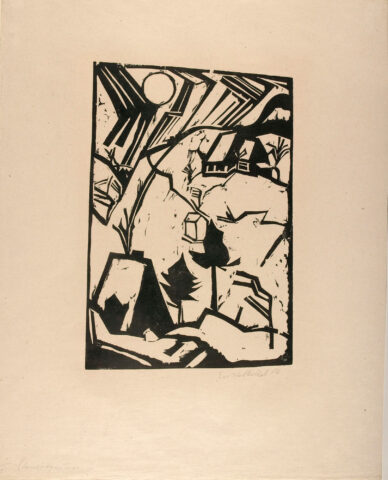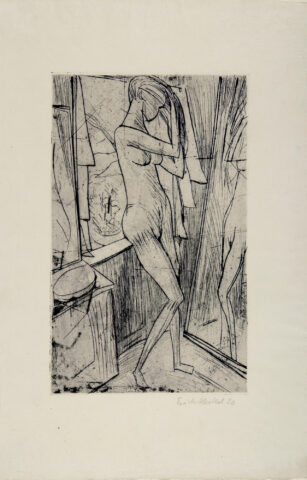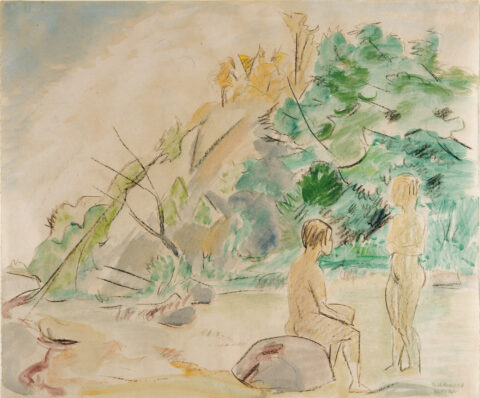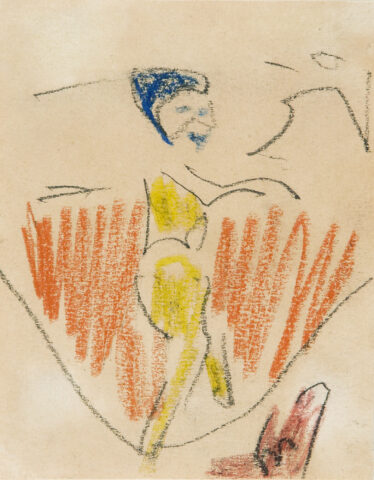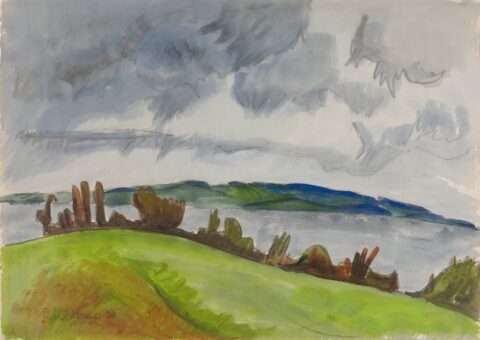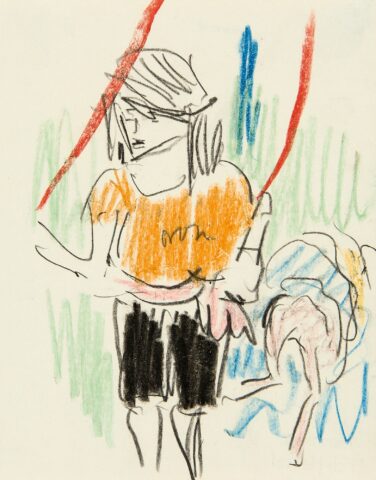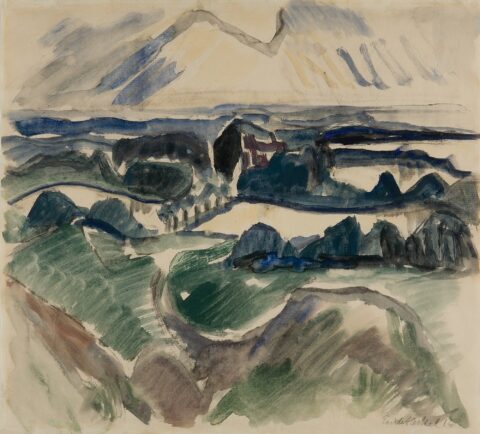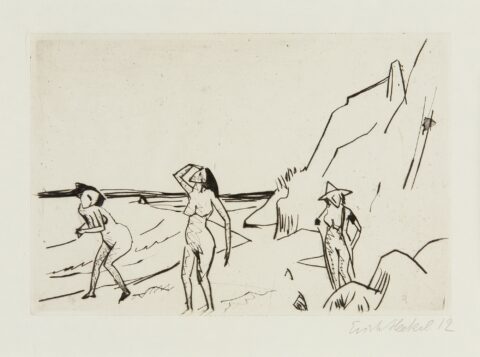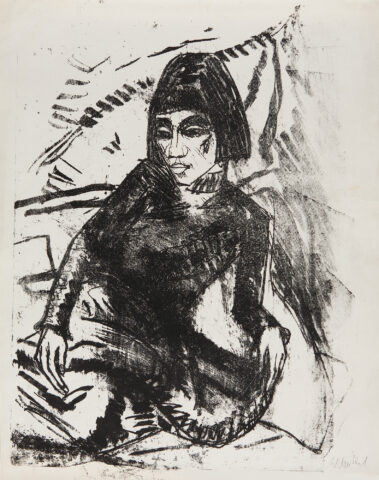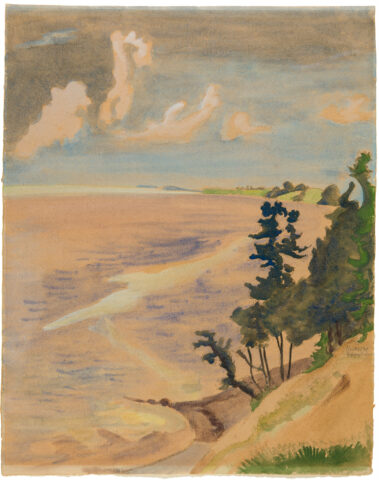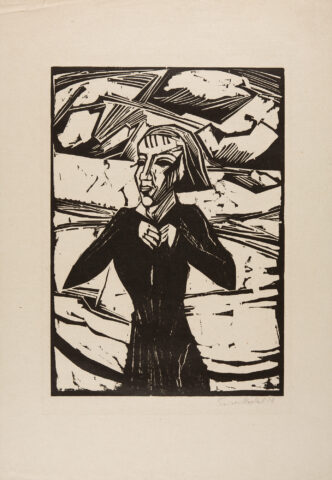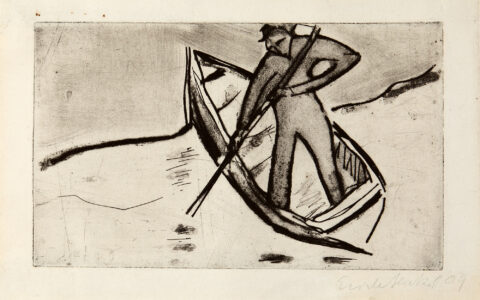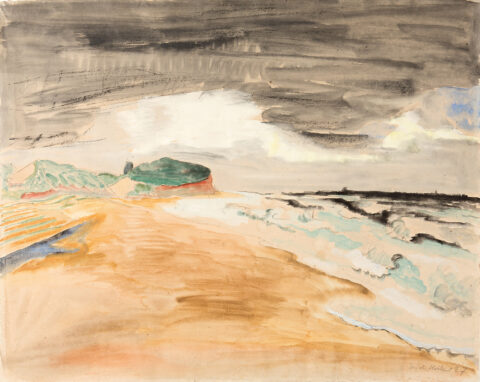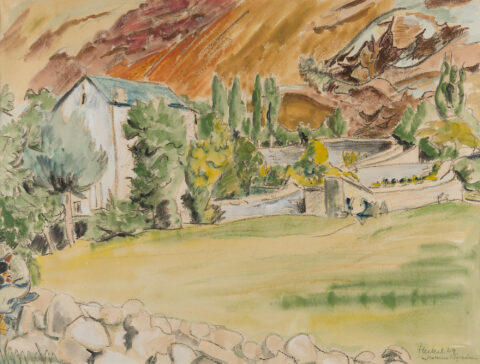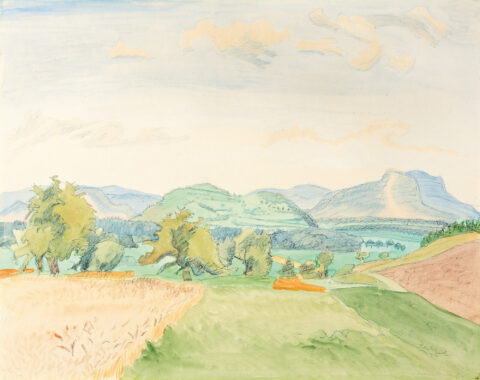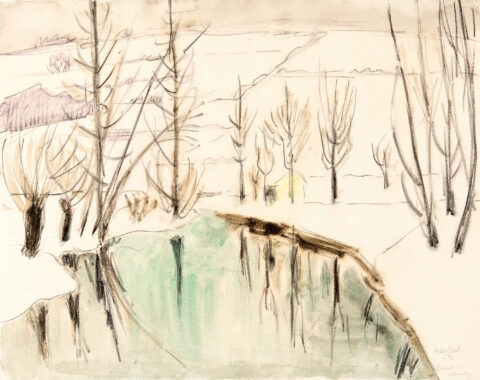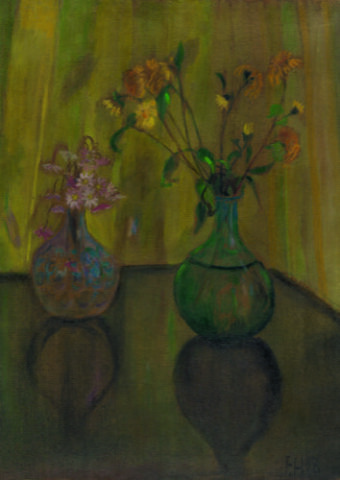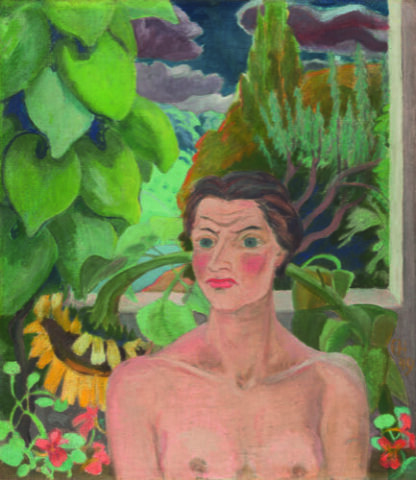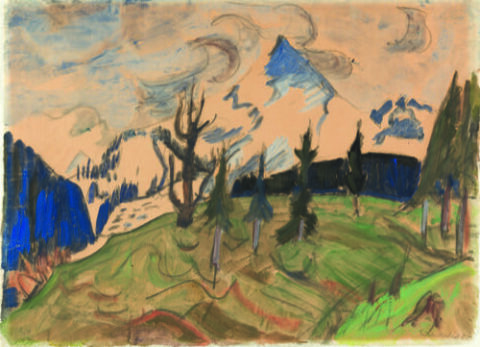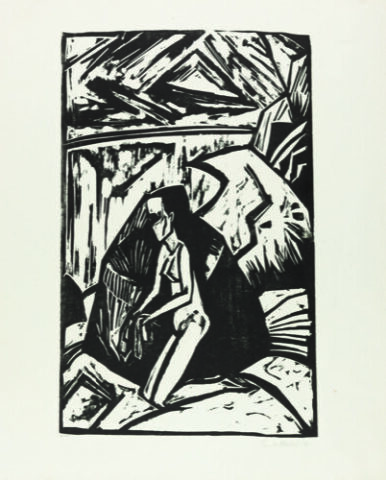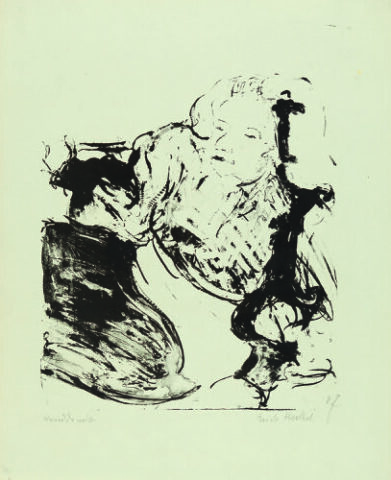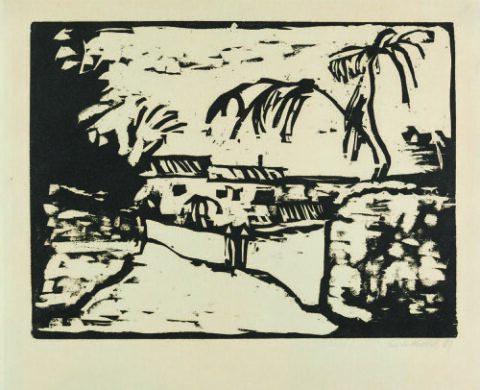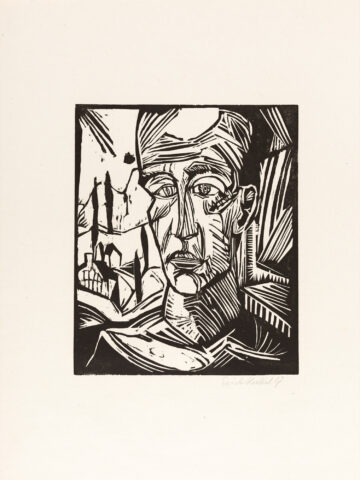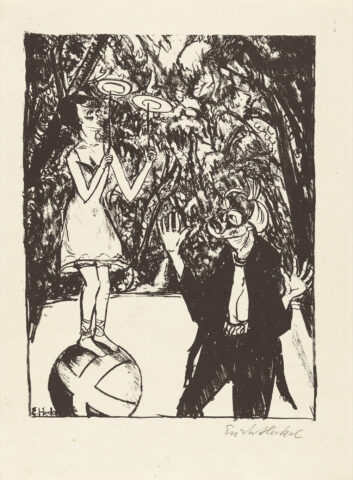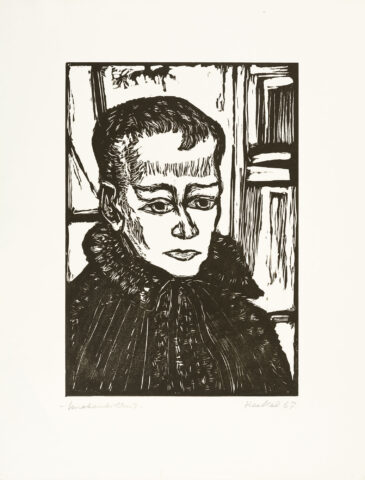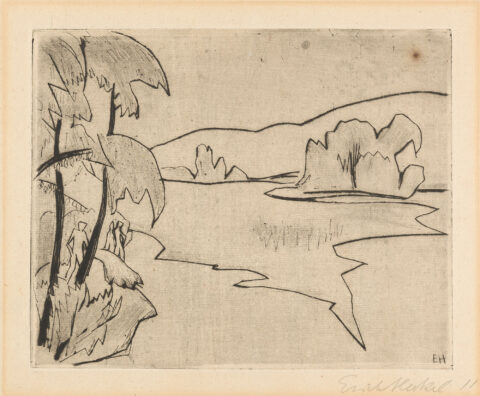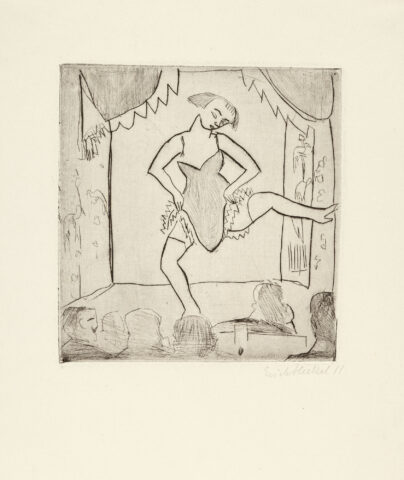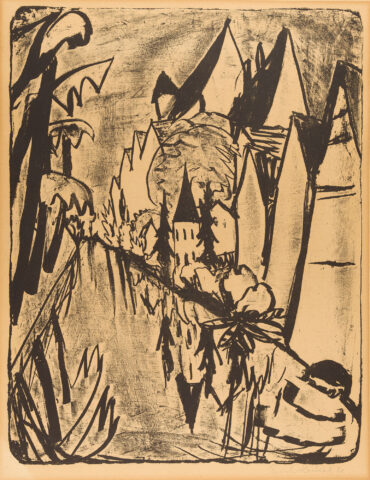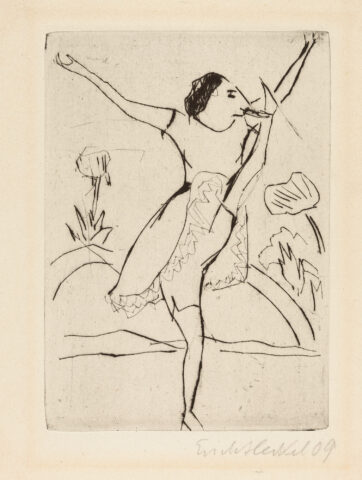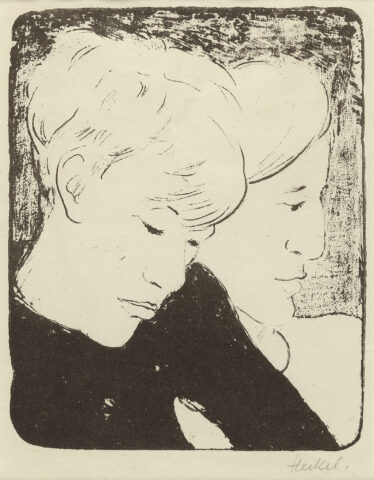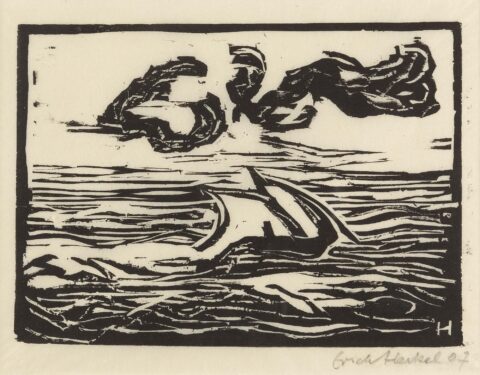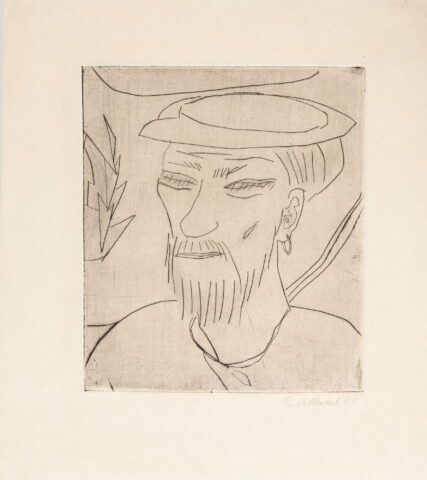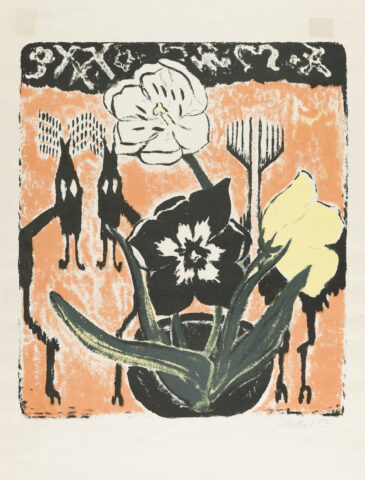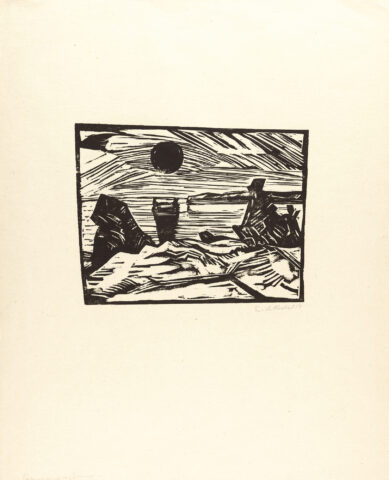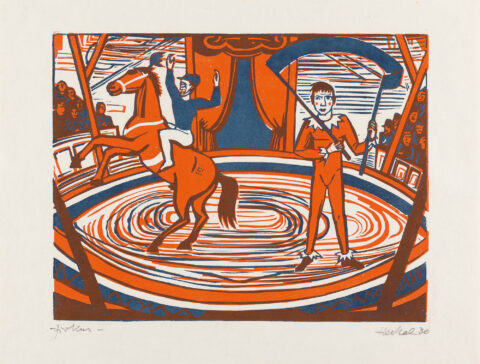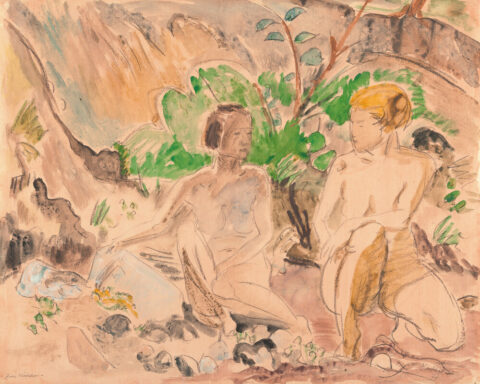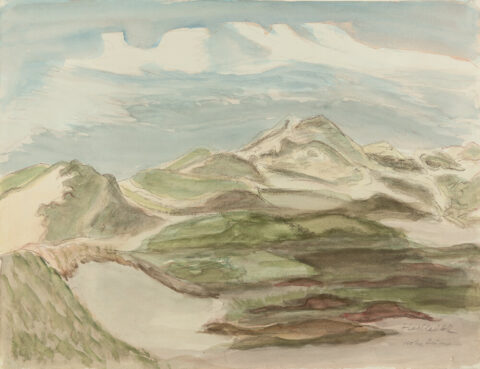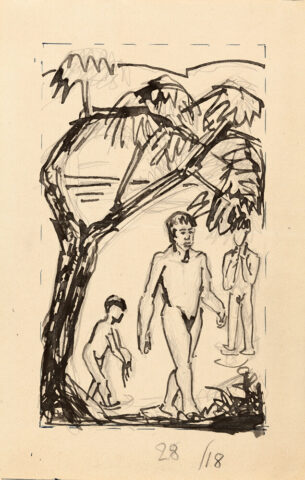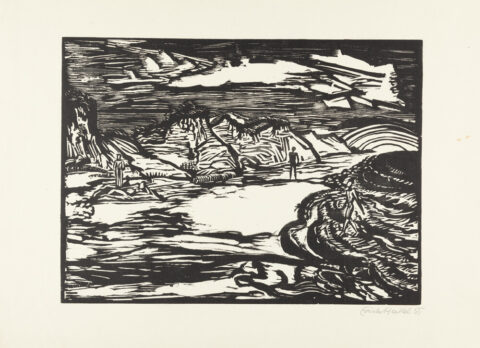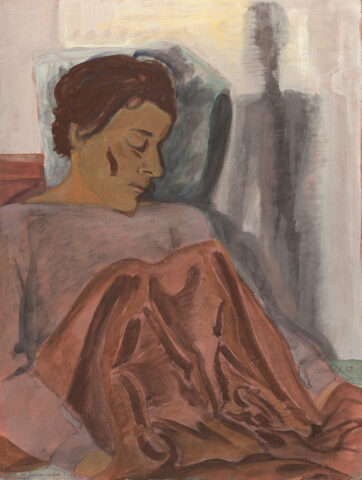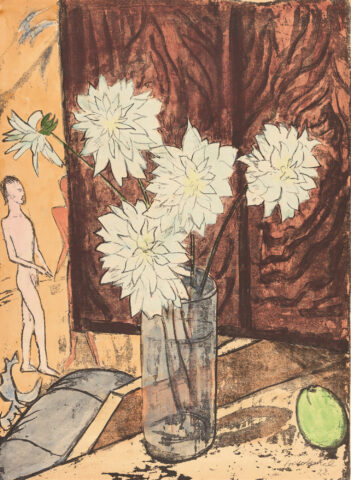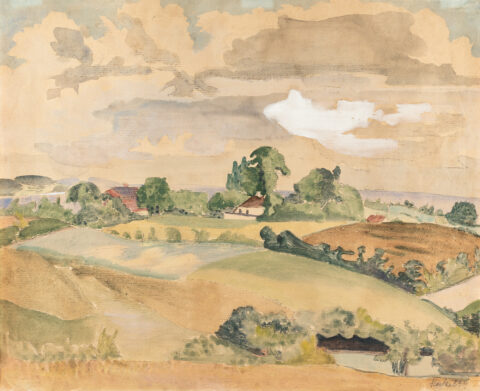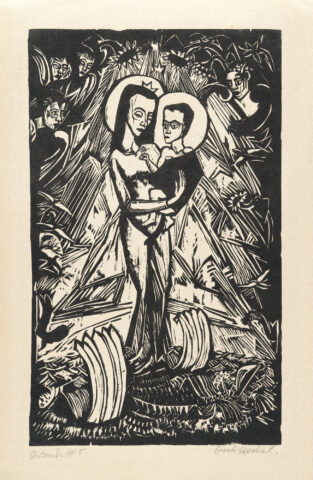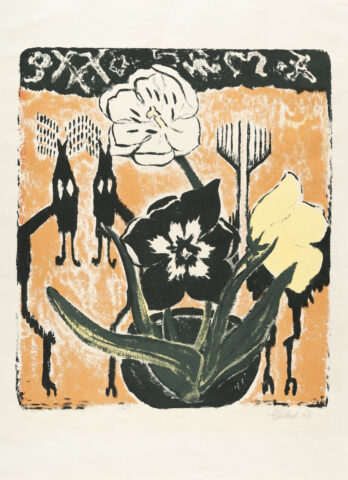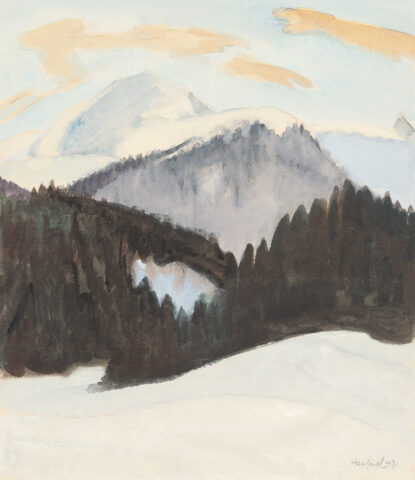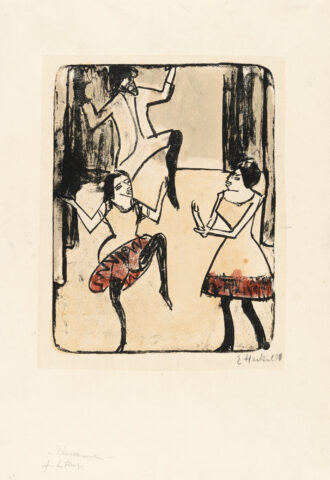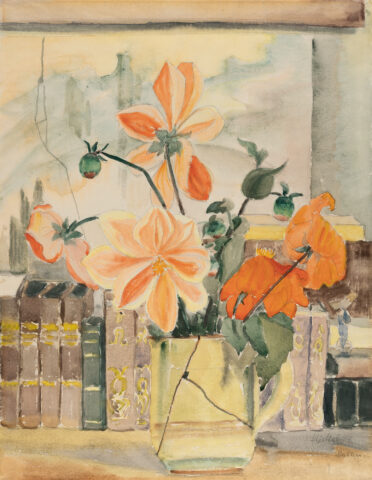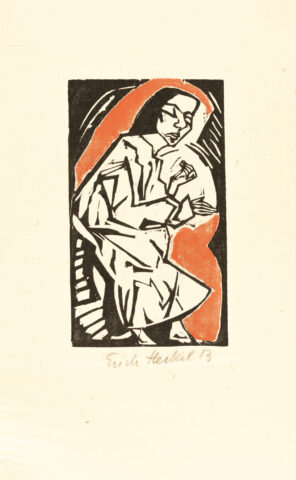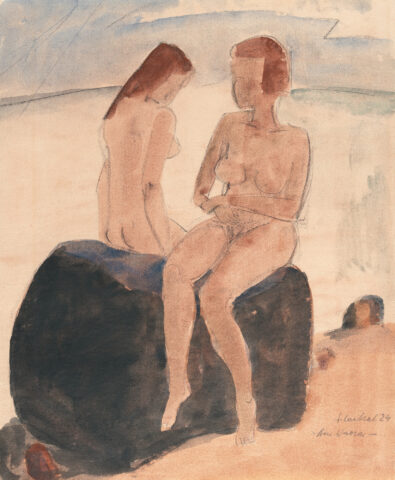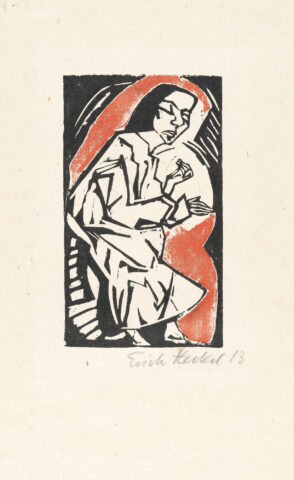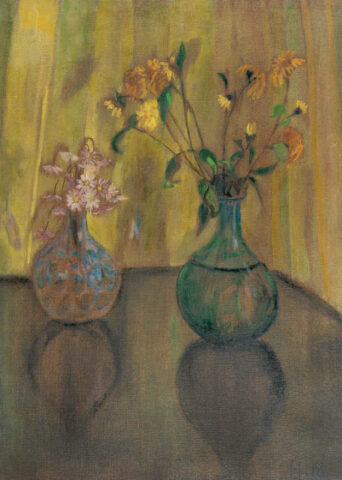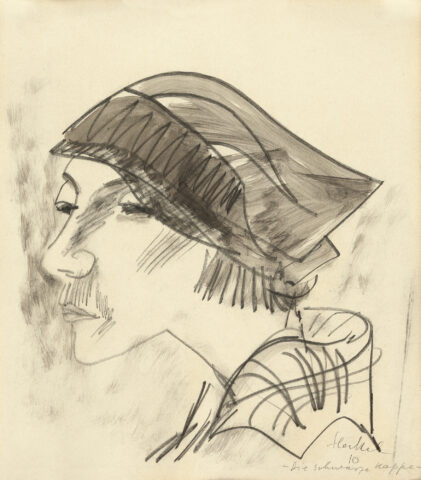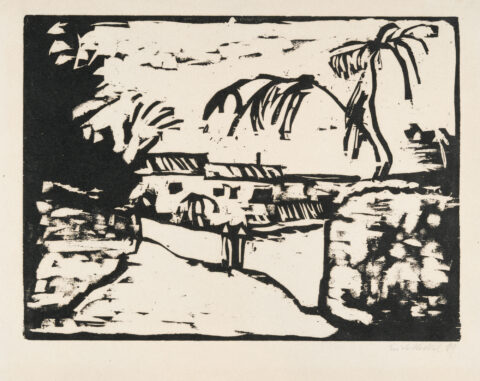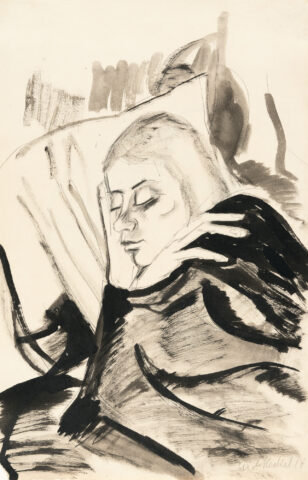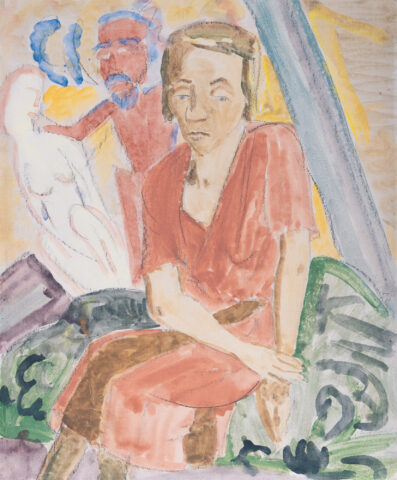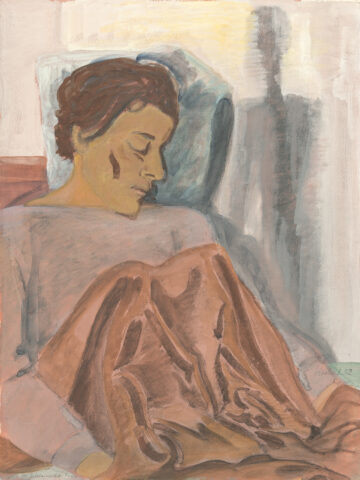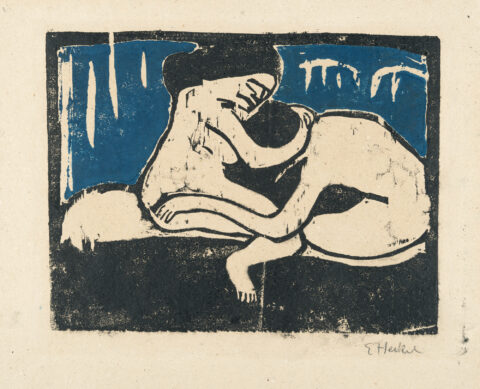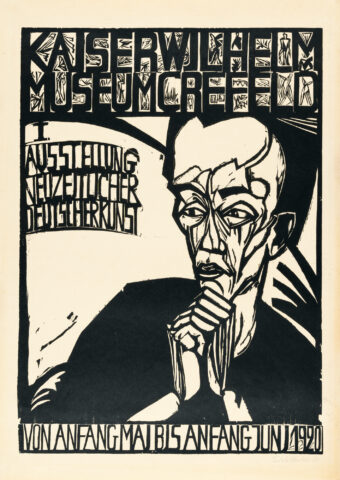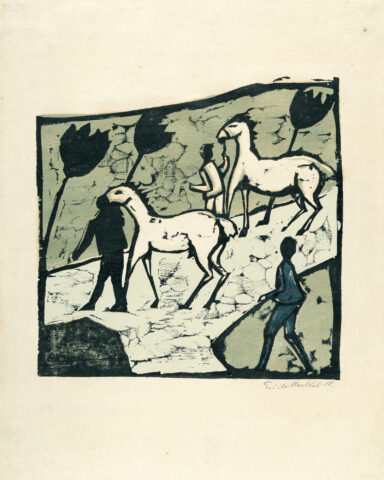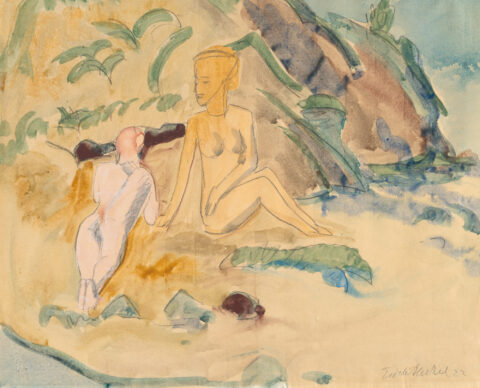Erich Heckel
Erich Heckel was born in Döbeln near Chemnitz in 1883 as the son of a railway engineer. At school he became friends with Karl Schmidt-Rottluff. In 1904 he began studying architecture in Dresden with Ernst Ludwig Kirchner and Fritz Bleyl, but broke off his studies early. At first he worked as a draughtsman and building supervisor for an architect in Dresden, and from 1907 he devoted himself exclusively to art. In 1905, together with Ernst Ludwig Kirchner, Fritz Bleyl and Karl Schmidt-Rottluff, he founded the Expressionist artists’ group “Die Brücke”, which rebelled against the academies and established art forms. Together with the other “Brücke” painters, Heckel moved to Berlin in 1911, where he took over Otto Mueller’s studio. Here city life and the circus world become his new pictorial motifs. After the Brücke disbanded in 1913, Erich Heckel’s first solo exhibition took place in Fritz Gurlitt’s gallery in Berlin. In 1915 Heckel marries the dancer Sidi Riha, known as “Siddi”, his most important model. During the First World War Erich Heckel served as a volunteer medic in Flanders, where he met Max Beckmann. Heckel’s disgust at the horrors of war is reflected in woodcuts and lithographs such as the sheet “Wounded Sailor” (1915). On the occasion of a Christmas party at the wounded collection centre in Ostend, he created the picture “Madonna of Ostende” (1915), which burned in the Neustaßfurt mine in 1945. Heckel’s signature can be found in an appeal for cultural workers from all disciplines published in the Völkischer Beobachter on 17 August 1934. However, this did not save him from being banned from exhibiting in 1937. The National Socialists defamed Heckel as a “degenerate artist” and confiscated 729 of his works from German museums. During a bombing raid in 1944, his Berlin studio was destroyed, with all the printing blocks and many of his works being destroyed. After the end of the war Heckel receives several offers to return to Berlin and take up a teaching post at the Hochschule der Künste, but he turns them down. From 1949 to 1955 he accepted a position as professor at the Hochschule der Bildenden Künste in Karlsruhe. In 1958, the Museum Folkwang in Essen organised the first large retrospective “Brücke” exhibition. After his retirement, Erich Heckel lived in seclusion in Hemmenhofen and died on 27 January 1970 in Radolfzell on Lake Constance.


